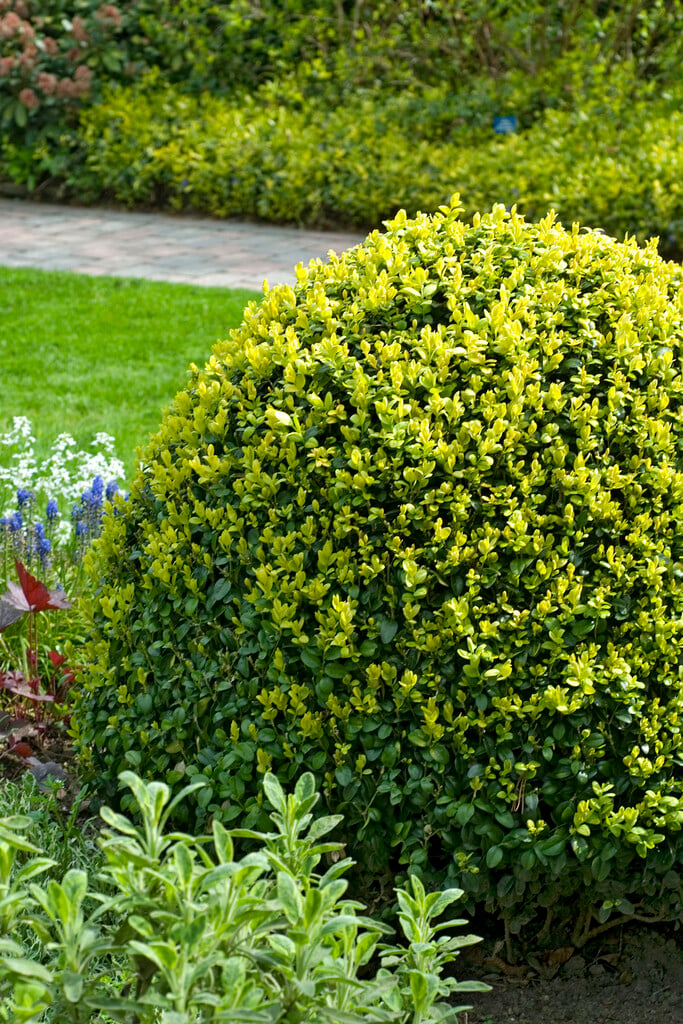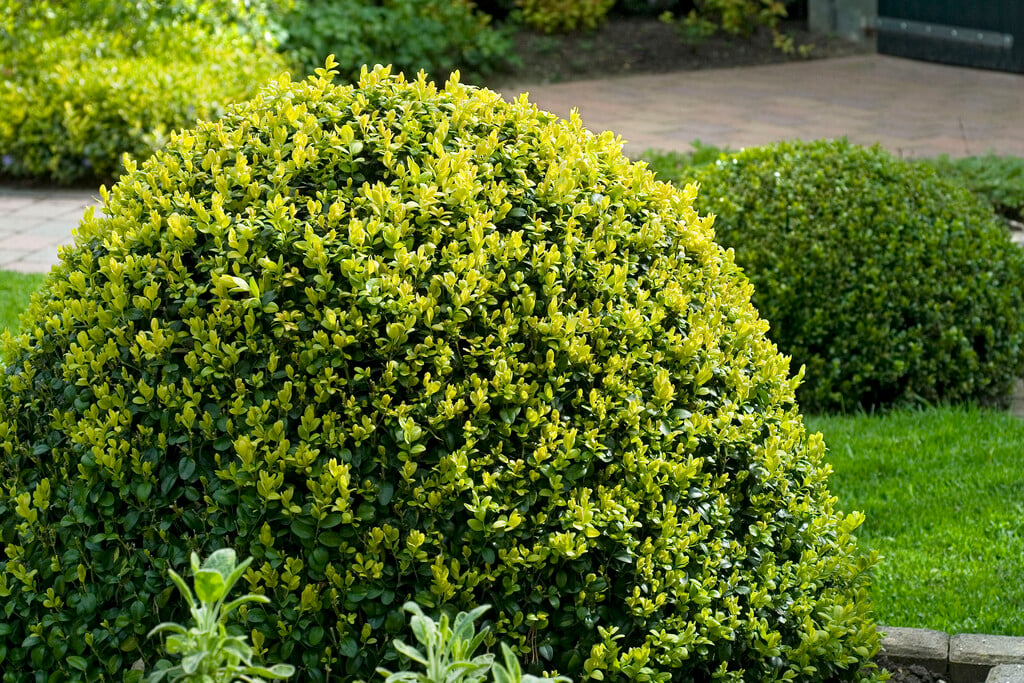Buxus sempervirens 'Aureovariegata' (v)
gold-edged box
Large evergreen shrub about 3m high, with a dense, bushy habit, grey-brown bark and small green leaves streaked and splashed with creamy yellow. Tiny yellow-green flowers are produced in the leaf axils in spring
Size
Ultimate height
2.5–4 metresTime to ultimate height
5–10 yearsUltimate spread
2.5–4 metresGrowing conditions
Moisture
Well–drained, Moist but well–drainedpH
Acid, Alkaline, NeutralColour & scent
| Stem | Flower | Foliage | Fruit | |
| Spring | Green Cream Yellow | |||
|---|---|---|---|---|
| Summer | Green Cream Yellow | |||
| Autumn | Green Cream Yellow | |||
| Winter | Green Cream Yellow |
Position
- Full shade
- Partial shade
Aspect
East–facing or South–facing or West–facing
Exposure
Exposed or Sheltered Hardiness
H6Botanical details
- Family
- Buxaceae
- Native to GB / Ireland
- No
- Foliage
- Evergreen
- Habit
- Bushy
- Potentially harmful
- Pets (dogs): Harmful if eaten For further information and contact numbers regarding pets, see the HTA guide to potentially harmful plants
- Genus
Buxus can be evergreen shrubs or small trees, with simple, leathery, opposite leaves and clusters of small, pale yellow flowers followed by pale green to brown fruits
- Name status
Accepted
How to grow
Cultivation
Grow in any fertile, well-drained soil. Prefers light shade, full sun may result in dull or scorched foliage in dry soils. Water regularly while establishing. See box cultivation for more detailed advice
Propagation
Propagate by semi-hardwood cuttings in summer
Suggested planting locations and garden types
- Architectural
- City and courtyard gardens
- Cottage and informal garden
- Patio and container plants
- Wildlife gardens
- Garden edging
- Hedging and screens
Pruning
Pruning group 8; trim hedges in summer
Pests
May be susceptible to box tree caterpillar, box sucker, mussel scale and red spider mite
Diseases
May be susceptible to a leaf spot, box blight and, rarely, honey fungus
Love gardening
Sign up to receive regular gardening tips, inspiration, offers and more
View our Privacy Policy
Get involved
The Royal Horticultural Society is the UK’s leading gardening charity. We aim to enrich everyone’s life through plants, and make the UK a greener and more beautiful place.

